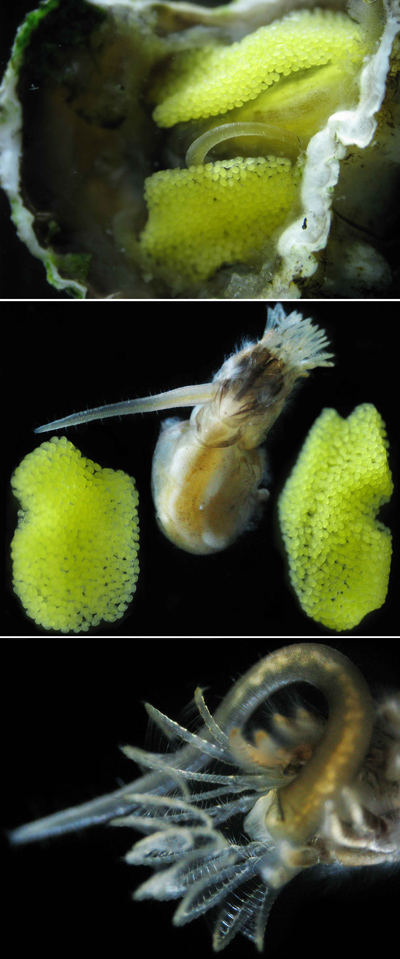If you are stuck to a rock it is tricky to get close enough to a partner to mate. One solution to this problem would be to release eggs or sperm into the open water, which is what many animals in this situation do. Acorn barnacles (Semibalanus balanoides), however, found a different solution. They have evolved the longest penis relative to their body size of any animal. In this video the penises of several barnacles are probing the neighborhood for mates. The penis is re-grown each mating season.
Acorn barnacles are hermaphrodites, each one has both male and female organs. The specimens in the photos below have been removed from the rock and turned upside down. Two yellow egg clusters can be easily identified (top and middle images). The testis occur as white regions along the body of the animal which is here removed from its calcareous shelter (middle image). The penis is centered in between the feeding structures (bottom image).

During the mating process, the penis of one barnacle is inserted into the body cavity of another and the sperm are released. Each barnacle can be fertilized by multiple partners, which means that a mothers offspring often have several different fathers. The developing embryos remain within the mother for several weeks before the larvae are eventually released.
Genetic paternity tests on the offspring performed by David Rand indicate that the closest neighbors are often not mates, which suggests that mating could be a selective process influenced by more than just the availability of partners. The barnacle penis shows adaptive plasticity— J. Matthew Hoch has shown that barnacles growing where waves are stronger have thicker penises. The barnacles shown here were collected by Brown graduate student Patrick Flight who, together with David Rand, uses them as models to study genome evolution. Photos and video by Stefan Siebert.